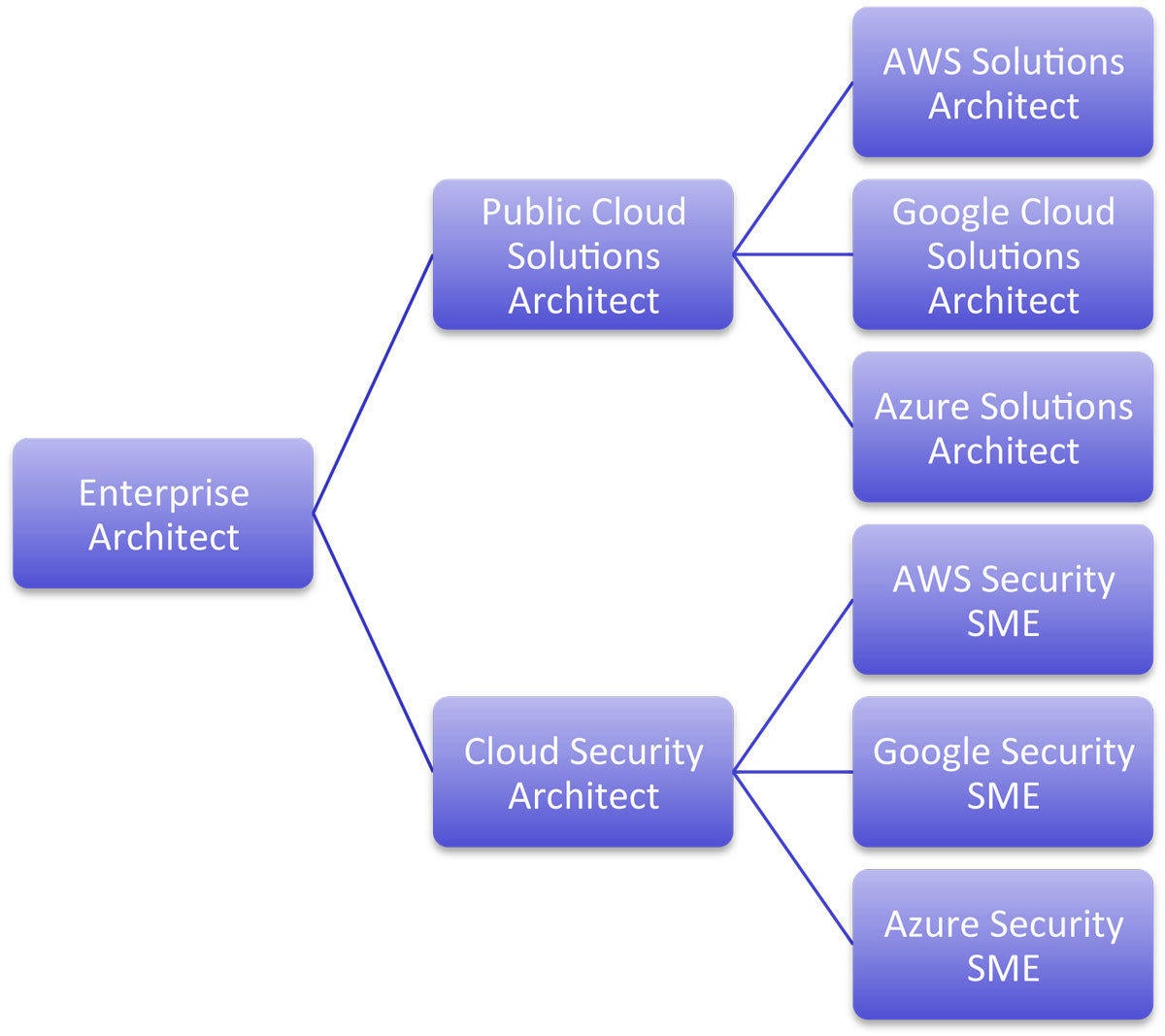How to move into a cloud career from traditional IT
Source: David Linthicum
 There is a great deal of interest from those with traditional IT skills—such as enterprise architects, developers, and networking engineers—to steer themselves into a cloud computing career that will not only provide job protection, but pay better as well.
There is a great deal of interest from those with traditional IT skills—such as enterprise architects, developers, and networking engineers—to steer themselves into a cloud computing career that will not only provide job protection, but pay better as well.
However, the path to cloud computing riches is not that clear for most.
The good news: There is a path for many IT pros into the cloud. This article shows you how to map a path to those jobs from your current state if you are an enterprise architect, database admin, application developer, system admin, test-and-acceptance engineer, or networking engineer.
As an example, the role of an enterprise architect is pretty general in terms of technology and platforms, but companies hiring in anticipation of moving to the cloud are looking for more specific skills.
But look at the career map in the figure below. There are two very good paths to follow: public cloud solutions architect and cloud security architect. In many cases, people who are good enterprise architects, accustomed to quickly picking up different types of technologies, can transition into these roles with little training.

David Linthicum/IDG
There are many paths to cloud jobs from the traditional enterprise architect role.
However, those architecture skills are typically not specific enough for many cloud-based IT shops, and most seek specific subject matter experts (SMEs) familiar with specific cloud brands, such as Amazon Web Services, Google, and Microsoft.
So, if you have held very general roles in IT architecture or security, you now need to now focus on the solution-based use of specific cloud services, including security services. For many enterprise architects, this is a somewhat unnatural act, but it’s necessary if you want to command higher pay and job security.
Database admin: the path to the cloud
The path for a database admin is pretty easy to map. Basically, it’s a matter of understanding the databases that are likely to be used for cloud-based workloads, and then mapping your skills to those specific databases. For example, Oracle DBAs can certainly continue their career with Oracle running on the public cloud. However, enterprises that move to public clouds usually opt for cheaper and more modern database technology, so it would be good for Oracle database admins to learn how to admin other databases.
For the last few years, Vizio's E Series has been designed to give consumers a taste of the latest TV tech at "whoa, I can actually afford that" prices.
For example, Amazon’s RDS relational database is now a popular cloud option in the enterprise. For data warehousing in the cloud, Redshift makes good economic sense. MySQL shops will consider Aurora running on AWS. There are dozens of object-based databases running in the cloud as well, such as Couchbase and MongoDB for which demand is high right now.
Again, the trick is to look at what’s hot in the cloud platform your target enterprises use, and then obtain those specific skills. Database generalists need not apply for most of the newer cloud gigs.
Software developer: the path to the cloud
Software development is perhaps the most versatile skill to have, because you can code on pretty much any platform. However, in the cloud, it pays to have a deep understanding of a specific public cloud, because you’ll need to understand and be able to create cloud-native applications.
Being “cloud-native” means that you’re embedding native cloud platform calls directly into the application, such as security services, queues, I/O services, and the management of provisioning and deprovisioning of resources. The use of these calls requires you to both have a detailed understanding of the programming language you use and understand what native interfaces to use where, how, and why.
System administrators: the path to the cloud
System admins will see the most changes in the move to the cloud. If you don’t make a move now, you could likely be out of a job in the near future. Sysadmin roles are changing because the systems that reside in data centers are finding their way into public clouds, and public cloud systems don’t need as much TLC as on-premises systems do.
For a sysadmin, the cloud career map means moving into cloud operations, aka cloudops. This is a new role in cloud operations, and it includes backup, recovery, performance monitoring, SLA management, and all of the fun stuff that comes along with operating sets of cloud-based virtual servers that you’ll never lay your hands on—and perhaps will never know where they are located.
Test-and-acceptance engineer: the path to the cloud
Test-and-acceptance engineers do not have a clean path to the cloud. So, you’ll have a lot to learn and relearn if you want to stay marketable. The best map to the cloud is to understand devops as it relates to cloud. This includes continuous testing, and that means creating testing scripts and becoming an SME in automated testing practices and tools.
If you’re that type of test-and-acceptance pro who is comfortable with remapping skills to this kind of very different role, you’ll be fine. However, if you’re accustomed to just test and record, and you can’t work and play well with new processes and technology, you’ll be quickly voted off the island.
Networking engineer: the path to the cloud
Networking pros are also difficult map to the cloud. Although networking is still needed, it’s mostly intercompany rather than intracompany. That means a transition toward WANs (wide area networking) and mobile networking.
The truth is that networking is already in the cloud world. As long as you spend enough money on infrastructure upgrades, it is not that hard of a nut to crack. Gone are the days when networks went down all the time, and thus when dozens of networking professional ran around rebooting and updating routers and hubs. Those “keep it running” skills will quickly commoditize, so the key value for a network engineer in the cloud is design, optimization, and management—not rebooting devices.
The best map to the cloud for networking pros is to focus on cloud-based networking for specific clouds. For instance, AWS provides a DNS services, along with the ability to monitor network traffic in and out. Network engineers who can hook into such services from the enterprise, and provide monitoring and resiliency best practices and use of tools, will have the best path for moving forward.
Everyone else: the path to the cloud
If your role is something else, not to worry. The patterns for getting from traditional IT to cloud It are basically the same for most IT roles: Get smart on specific cloud technology, and do it fast. Take advantage of on-demand training, or spring for the cloud provider-specific certification training.
What’s critical is to reinvent yourself for the cloud. Anyone who’s been in IT a log time should already know that, because IT has changed before, and it will change again. That fact will never change.
| }
|